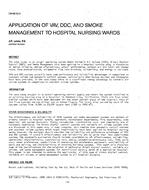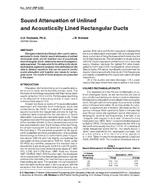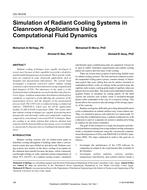Amidst the growing commitment of reducing energy consumption across the Gulf Region, the rising discourse and practice ofsustainability in institutions of higher learning has led to energy- efficiency investments to improve the overall environmentalperformance. There is an increasing level of legislation addressing energy and environmental issues. Recently, Qatar ConstructionSpecifications upgraded requirements aimed at improving the energy-efficiency of domestic, public and commercial buildings byadopting the Global Sustainability Assessment System (GSAS) requirement hence, raised the need of solar assisted coolingsystem. Air conditioning counts for more than 60% of the electricity consumption in Gulf Cooperation Council (GCC)countries in the built environment. Moreover, cooling the ventilation air is usually obtained with refrigeration machinery, andoften some post-heating is required to heat the air before it is supplied to the rooms. The other possibility is chemicaldehumidification by using desiccants. Liquid desiccants are able to reduce the water vapor content in moist air. In this paper theeffect of the dehumidification cooling processes is compared with the vapor compression system. Reductions of about 7 to 10°C(12.6 to 18°F) in the wet bulb temperature and about 10 gm/kg (70 grains/Ib) in the humidity ratio are obtained from thedehumidifier. The energy savings using the desiccant cooling and dehumidification system during summer season are reported. Itis found that the power consumption used to produce treated fresh air by the desiccant system can reduce about 50% of theexisting system.
Citation: First International Conference on Energy and Indoor Environment for Hot Climates, Doha, Qatar, February 2014
Product Details
- Published:
- 2014
- Number of Pages:
- 7
- File Size:
- 1 file , 2.4 MB
- Product Code(s):
- D-2014FICEConf-8-1


